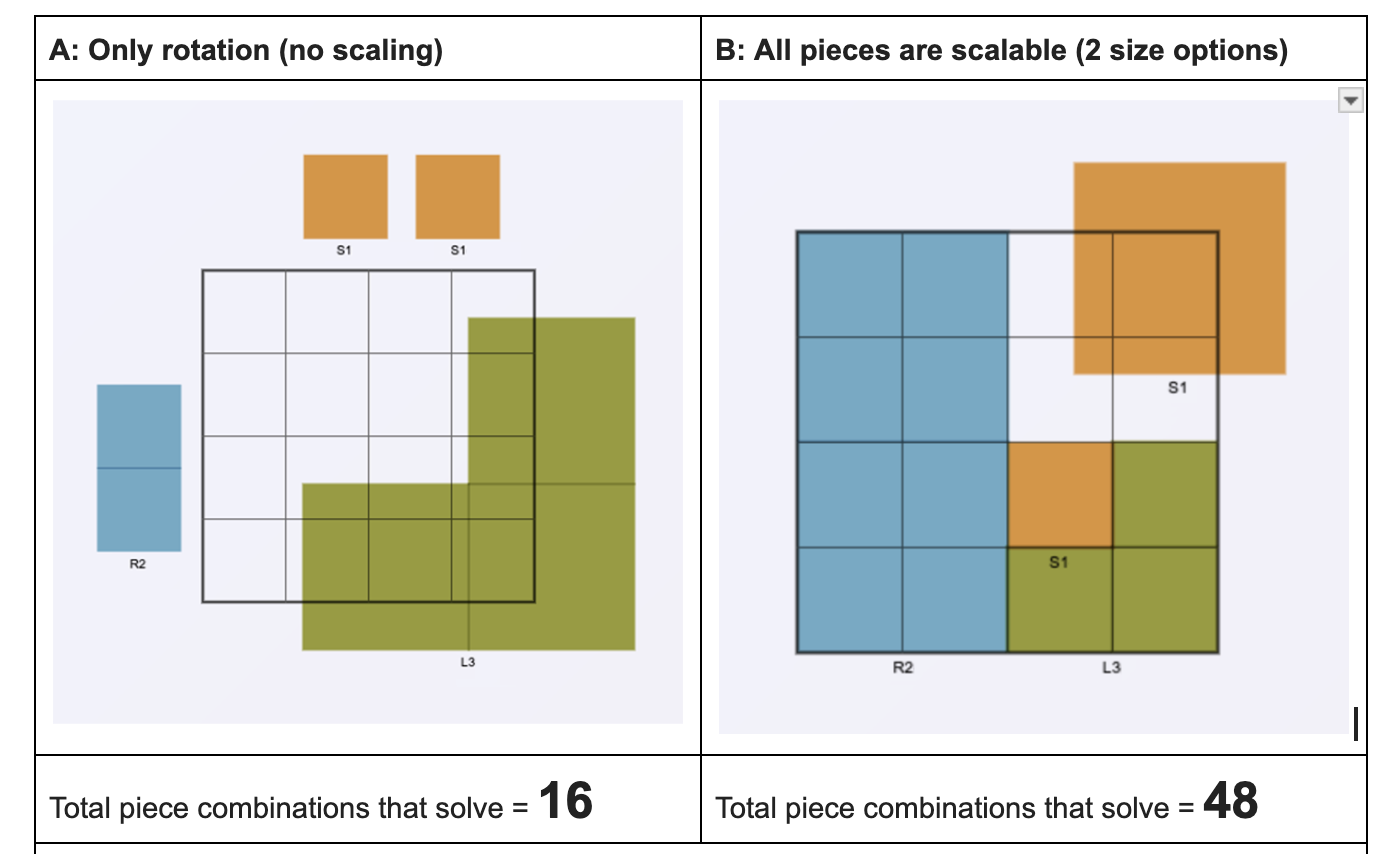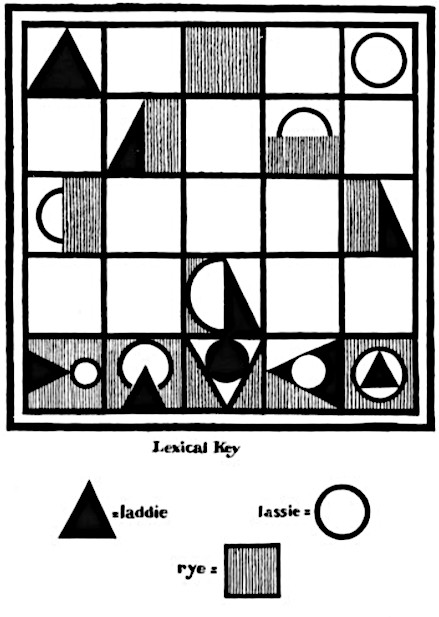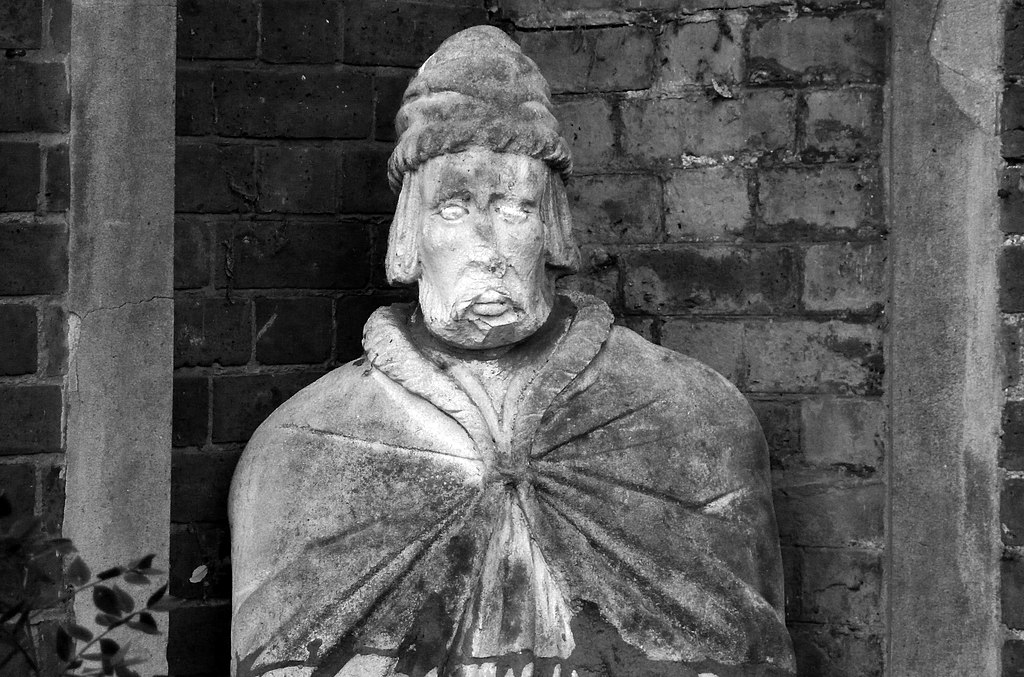Reader Chris Dawson has devised a tiling puzzle game with a twist: Players drag, rotate, and scale pieces to fill a grid, but each piece can be scaled to either 1x or 2x its base size.
“The scaling mechanic doesn’t just add variety — it fundamentally changes the maths of the puzzle space. Scaling creates a solution space that grows faster than puzzle complexity itself. In a minimal 4-piece puzzle [below], adding scaling provides a modest 3x multiplier. But add just 2 more pieces, and that multiplier explodes to 21x — a 7-fold amplification. This isn’t additive enhancement; it’s exponential transformation.”
Here’s a demo, and here’s the beta, with daily challenges. A multiplayer version is in development.
(Thanks, Chris.)




